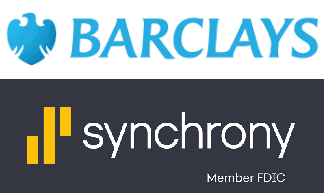 Most consumers know the popular savings account but how do they fare against each other? Barclays Savings Vs Synchrony Bank Savings, which savings account will fare better in terms of the consumers’ needs? The key items to look for in any savings account are first and foremost the interest rates, then fees, accessibility, and lastly any additional features. These key factors will guide you on how the two most popular savings account fare in these categories. Furthermore, it will provide a general understanding of how savings accounts work and how to get it to work for the consumers.
Most consumers know the popular savings account but how do they fare against each other? Barclays Savings Vs Synchrony Bank Savings, which savings account will fare better in terms of the consumers’ needs? The key items to look for in any savings account are first and foremost the interest rates, then fees, accessibility, and lastly any additional features. These key factors will guide you on how the two most popular savings account fare in these categories. Furthermore, it will provide a general understanding of how savings accounts work and how to get it to work for the consumers.
| BONUS LINK | OFFER | REVIEW |
| Chase Business Complete Checking® | $300 or $500 Cash | Review |
| Chase Private Client | $3,000 Cash | Review |
| Chase Total Checking® | $300 Cash | Review |
| Chase College CheckingSM | $100 Cash | Review |
| J.P. Morgan Self-Directed Investing | Up To $700 Cash | Review |
| Chase Secure BankingSM | $100 Cash | Review |
Barclays Savings vs Synchrony Bank Savings
Barclays Savings
Synchrony Bank Savings
Interest Rate: 1.90%
Interest Rate: 1.90%
Fees: No monthly maintenance fees
Fees: No monthly service fee
Accessibility:
Accessibility:
Barclay Savings Fees:
- Returned Check: $5
- Excessive Activity Fee: $5
- Paper Statements: $0.50
Barclay Savings Fees:
- Returned Check: $20
- Excessive Activity Fee: $20
- Paper Statements: $3
Barclays Savings vs Synchrony Savings In-Depth:
Considering that both of these accounts offer an exceptionally dominant APY attached… Barclay’s 1.90% vs Synchrony’s 1.90%; It’s all the more necessary to look at both of these accounts at a more comparative level. The monthly fees on the Synchrony Savings is already so easily waived with a $30 minimum balance requirement compared to the no monthly maintenance fee on the Barclay Savings… Therefore, we must take a more intricate look into these accounts beyond the monthly fees.
Now at this point, it’s more viable to compare these accounts on the basis of what you want in a savings account. Synchrony’s Saving account offers an ATM card in which you can withdraw your funds. On the other hand, Barclay doesn’t offer an ATM card and you’re limited to 6 withdrawals per statement cycle, however, keep in mind that Synchrony only has one branch location.
Barclay’s Savings earns dividends as long as you have $.01 in your account. On the other hand, Synchrony requires you to have $30… Anything below that and you won’t earn dividends. Now, If you’re looking to open numerous savings accounts, Barclay offers you the ability of opening up to 25 accounts. However, there are some things to consider like unpredictable rates that are subject to change if necessary (highly doubt it will fluctuate less than 1.00% in the next year) and Barclays Bank US does not offer a variety of products such as checking accounts, mortgage loans and auto loans. At the end of the day, both accounts are FDIC insured up to $250,000, so there’ no risk with your deposits… However, there is a distinguishable trait within the fine print of Synchrony’s savings stating that it’s “FDIC insured per depositor.”
Conclusion:
Deciding between the Barclay’s 1.90% vs Synchrony’s 1.90% is like choosing between apples and oranges. In all, it’s just preference… Whether you want a dividend that starts at just one cent with “Savings Assistant” tool readily available to support you reach your goal on top of the ability to open up to 25 accounts with Barclay or you want a savings that offers an attached ATM card in which you could withdraw your funds with. I personally would go with the Barclay Savings because I’m interested in what their online savings tool has to offer. Both accounts are FDIC insured so there’s no risk involved with your deposits. Be sure to also check out these best savings rates from our exclusive list nationwide!

You have Barclay Savings Fees twice and no Synchrony Savings Fees, so I can’t tell the comparison difference, i.e., which bank is which. Apparently, you’re discussing two different banks because the fees are quite different.